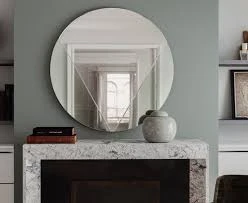

Understanding Low-E Soft Coat Glass Benefits and Applications
In today’s world, where energy efficiency and sustainability are becoming increasingly important, the emergence of innovative building materials plays a significant role in reducing our carbon footprint and energy consumption. Among these materials, Low-E (Low Emissivity) Soft Coat Glass stands out due to its unique properties that enhance thermal performance without compromising aesthetics.
What is Low-E Soft Coat Glass?
Low-E Soft Coat Glass is a specially formulated glazing product designed to minimize the amount of infrared and ultraviolet light that passes through it without compromising the visible light transmission. The Low-E designation refers to a thin, transparent metallic layer that is applied to the glass surface. This layer reflects heat back into the building during winter while allowing sunlight to illuminate the interior. In summer, it reflects the sun's heat away from the building, thereby reducing the reliance on air conditioning and creating a comfortable indoor environment.
The Soft Coat term indicates that this metallic coating is applied to the glass in a controlled environment, resulting in a smooth and uniform finish with high performance standards. The soft coat is more efficient than its hard-coat counterparts, particularly in terms of temperature regulation.
Benefits of Low-E Soft Coat Glass
1. Energy Efficiency One of the primary benefits of Low-E Soft Coat Glass is its ability to improve energy efficiency significantly. By reflecting heat back into the building during colder months and keeping it out during warmer months, it reduces heating and cooling costs.
2. UV Protection Low-E glass effectively blocks harmful ultraviolet (UV) rays, which can degrade furnishings, carpets, and artwork over time. This protective quality not only helps to maintain the condition of interior spaces but also adds an extra layer of comfort for occupants.
3. Enhanced Comfort By stabilizing indoor temperatures, Low-E Soft Coat Glass contributes to overall occupant comfort. It minimizes draftiness and hot spots often experienced with traditional glass, making indoor environments more livable year-round.
4. Environmental Impact By reducing energy consumption, Low-E Soft Coat Glass contributes positively to the environment. Using less energy for heating and cooling leads to lower greenhouse gas emissions from power plants, supporting global efforts to combat climate change.

5. Noise Reduction Although not primarily designed for soundproofing, Low-E Soft Coat Glass can contribute to noise reduction, making it an ideal choice for urban environments or buildings near busy roadways.
Applications of Low-E Soft Coat Glass
Low-E Soft Coat Glass can be used in various architectural and building applications, including
- Residential Buildings Homeowners increasingly choose Low-E glass for their windows and doors to enhance energy efficiency and comfort. It is particularly beneficial in climates with extreme temperature variations.
- Commercial Properties Office buildings and retail spaces utilize Low-E Soft Coat Glass for its aesthetic appeal and thermal performance. It can help create a more pleasant working environment while reducing energy costs.
- Curtain Walls and Skylights In modern architectural designs, Low-E Soft Coat Glass is often used in curtain wall systems and skylights, allowing for abundant natural light without excessive heat gain.
- Renovations Many retrofitted buildings now feature Low-E glass as part of their window replacement projects, bringing older structures up to modern energy efficiency standards.
Conclusion
In conclusion, Low-E Soft Coat Glass represents a significant advancement in glazing technology, offering an array of benefits that contribute to energy efficiency, occupant comfort, and aesthetic appeal. As the building industry continues to evolve, the demand for such innovative materials is likely to grow, paving the way for more sustainable construction practices. Whether in a new build or a renovation project, specifying Low-E Soft Coat Glass is a smart choice that aligns with contemporary priorities of sustainability and energy conservation. The future of architecture is bright, and glass plays a pivotal role in elevating the standard for energy-efficient design.